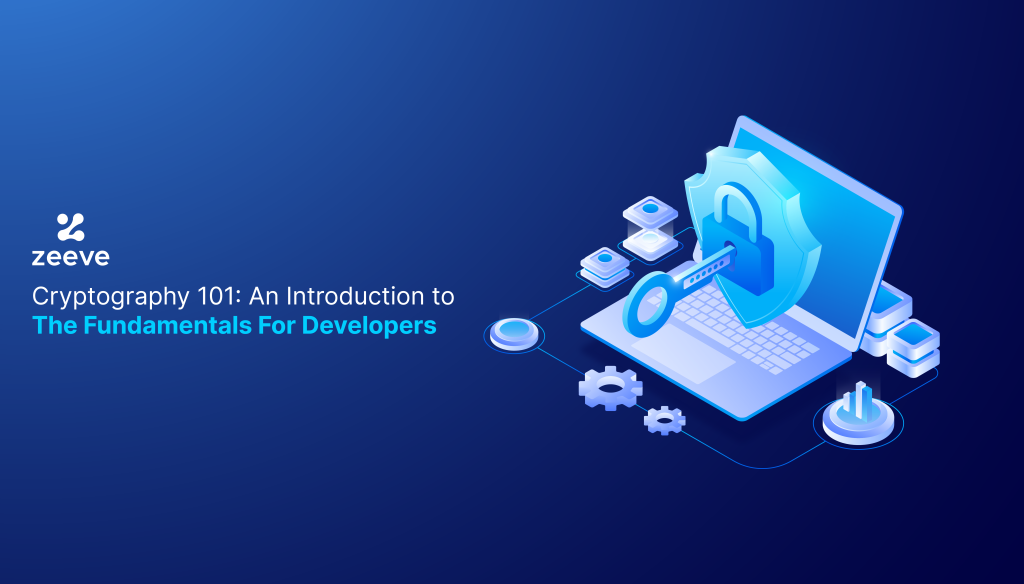Cryptography is a technique used to safeguard the privacy of communications by converting regular text into unbreakable code using a complex process. For centuries, people have relied on cryptography to protect their anonymity and sensitive information.
However, with the growth of the internet and digital communication, cryptography has become an indispensable tool for securing online transmissions. The development of digital communication has made cryptography a necessity for maintaining privacy and security in the digital age.
Foundational Principles of Cryptography
The use of cryptography is dependent on the following three foundational principles:
Confidentiality
This principle ensures that the data that has been safeguarded can only be accessed by those individuals who have been granted permission to do so. A broad assortment of techniques, such as symmetric and asymmetric key encryption, are utilized by cryptographic algorithms to safeguard the users’ right to personal privacy.
Integrity
Applying this principle ensures that the integrity of the data after it has been encrypted will not be compromised while it is being sent. Data consistency can be validated with a class of techniques called hashes.
Authentication
Applying this principle ensures that the identities of those who correspond with one another are thoroughly investigated. The implementation of asymmetric key strategies is required for authentication to take place.
How Cryptography Works?

The transformation of unprotected text into encrypted text through the application of complex mathematical procedures is how cryptography is carried out. They are the only ones who can view the protected text because they have the required key to retrieve the data.
Authorized parties are the only ones who can view the protected text. In the case of symmetric key encryption, the same key is utilized for both the encrypting and decrypting of data, whereas in the case of asymmetric key encryption, two keys—a public key and a private key—are utilized. Only in the case of symmetric key encryption is it feasible to protect and unscramble data using the same secret.
When data is encrypted, it is reorganized into a format that renders it unreadable and extremely difficult to comprehend in the absence of the proper decryption key. Before being transmitted through a private channel, in this case, the internet, the data is encrypted to prevent unauthorized access. Once the data has been received by its intended recipient, the correspondent will use the key to unscramble the data to return it to its original form, which is plain text.
Cryptographic Algorithms
These are some of the cryptographic algorithms that come up the most frequently in the application of modern cryptography, which uses a wide variety of different kinds of algorithms to ensure data security:
Symmetric Algorithms
These methods use the same key to encrypt and unscramble data, making it possible to conduct both processes in a single operation. Both people need access to the same key for this to be a viable option. Examples of symmetric key algorithms include the Advanced Encryption Standard (AES), Data Encryption Standard (DES), and Triple Data Encryption Standard (3DES).
Asymmetric Algorithms
The process of encrypting and decrypting data with these methods requires the use of two keys: a public key and a private key. The public key can be found online, while the private key is kept secret. While the private key is kept hidden from the general population, the public key is freely available to anyone who asks for it. Elliptic Curve Cryptography, RSA Cryptography, and Diffie-Hellman Cryptography are all instances of asymmetric key approaches.
The algorithms listed above will be discussed in detail in subsequent posts.
Applications of Cryptography
The applications of cryptography listed below are some instances of how it is used in real life:
- Online banking: The use of cryptography in online banking helps to protect the confidentiality of sensitive information like account numbers and passwords, as well as the transactions themselves, which can be costly and potentially dangerous.
- E-commerce: The implementation of cryptography within e-commerce platforms contributes to the safety of digital financial transactions that are carried out over the internet. It ensures that sensitive information relating to payments, such as the specifics of credit cards and other confidential information, is protected from being accessed by cybercriminals and other parties involved in fraudulent activity.
- Military sector: The military and the defense industry make use of cryptography to protect the confidentiality of classified information and to stop unauthorized users from accessing restricted communication channels. In addition to this, it is employed in the manufacturing of encrypted communication networks for the purpose of achieving the goals of various military and security activities.
- Healthcare sector The healthcare business makes use of cryptography to safeguard patient data, medical paperwork, and confidential information from unauthorized access. This is necessary to protect the privacy of patient information and ward off identity theft.
- Email encryption: Cryptography provides security for email correspondence so that users can feel comfortable sending and receiving emails. Encrypting the email message helps achieve this goal because it prohibits the message from being viewed by anyone who is not sanctioned to do so.
- Safekeeping of Login Information: To ensure the safety of passwords, cryptography is used to hide them before they are saved in a database. This is done before the passwords are protected. This helps to ensure that user identities and the data affiliated with those accounts are not accessed inappropriately.
- Digital Signatures: Cryptography is used to create digital signatures, which are then used to verify the authenticity of digital documents and to prevent fraud. This verification and prevention of copy are accomplished with the assistance of cryptography. To prevent deception, digital fingerprints are used.
The Application of Cryptography to Blockchain

Cryptography is an essential part of the technology that underpins blockchain, and it plays a central role in the system. The implementation of cryptography within the blockchain is necessary to guarantee the integrity of financial transactions and prevent unauthorized users from accessing the network.
The use of cryptography to generate a digital signature for each transaction and to ensure that only authorized parties can access the data serves to keep the data private and protected from access by illegitimate parties.
In addition, cipher functions are used to ensure the authenticity of the information stored on the blockchain. This is done to prevent unauthorized access to the data.
Difference Between Cryptography And Encryption
The fields of cryptography and encryption are related but distinct subfields of computer security. Cryptography and encryption are often used interchangeably because there is a connection between cryptography and encryption. Both of these tools are essential if one wishes to avoid unauthorized access to confidential information or the stealing of that information. Nevertheless, they carry out their functions at various levels of abstraction, and as a result, they serve multiple purposes altogether.
Cryptography is generating and deciphering codes and ciphers to secure one’s communications. It is both an art and a science. It includes converting regular text into a secret code using mathematical techniques so that it can be sent over an unsecured channel without the risk of it being read by unauthorized parties. This ensures that the text cannot be read by anyone unauthorized.
Digital signature and message identification codes are two examples of cryptographic methods that can be utilized to guarantee the truthfulness and integrity of the information that is being transmitted. Other examples of these methods include cryptographic hash functions and message authentication codes.
Encryption, conversely, is a specialized application of cryptography that includes transforming ordinary text into a structure known as ciphertext, which is unintelligible to anyone but the intended recipient. Following the successful conversion of unencrypted, this step will take place. Encryption methods use a key, a piece of information that is kept secret, to convert plaintext into ciphertext. This transformation cannot occur without the key.
Using the same key employed during encryption is the only method to decipher the ciphertext and recover the original transcript. It is possible to protect data even if it is not being actively moved or used, such as the files that are stored on a hard drive or the data that is being transmitted over a network.
Cryptography Today: How safe is it really?
The use of cryptography does not guarantee complete safety because it is possible to circumvent its protections in certain situations. On the other hand, the methods that are utilized in modern cryptography are extremely secretive and have proven to be difficult to decipher.
For an adversary to successfully break cryptography, they would first need to obtain knowledge of the encryption secret. This can be done in a few ways, including the key being kidnapped, deciphered using brute force, or vulnerabilities in the encryption technique being utilized and leveraged.
However, modern encryption methods use passwords that are too long to be deciphered through the use of brute force, which makes it extremely difficult for potential adversaries to crack the key. Because encryption algorithms are continuously updated to repair any vulnerabilities that are discovered, it will be difficult for attackers to locate and leverage any weaknesses that may exist in these algorithms.
Final Remarks
Cryptography is an important part of contemporary communication because it helps to protect the confidentiality of the information and restricts access to it by illegitimate parties. To convert regular text into protected text, sophisticated mathematical operations must be used. These operations guarantee the text’s confidentiality, integrity, and authenticity. Even though cryptography has flaws, contemporary cryptography techniques have shown to be very private and difficult to crack.
The field of quantum computing is one example of a domain in which cryptography plays an especially significant role. Traditional cryptography methods could be jeopardized if quantum computers continue to gain strength and become more sophisticated. However, novel cryptography methods impervious to quantum computing are currently under development to safeguard against this risk.
In addition, quantum computing has the potential to revolutionize cryptography by developing new cryptographic protocols that take advantage of quantum properties such as superposition and entanglement. This would be possible thanks to the possibility of quantum computing.
In the subsequent threads we will learn in-depth about Symmetric key cryptography, asymmetric key cryptography, hashing, encryption and a lot more other interesting things . So, keep following Zeeve to learn & apply anything blockchain.





